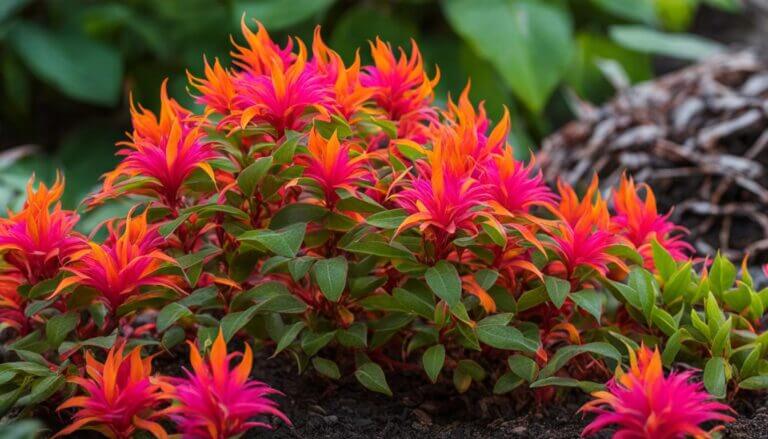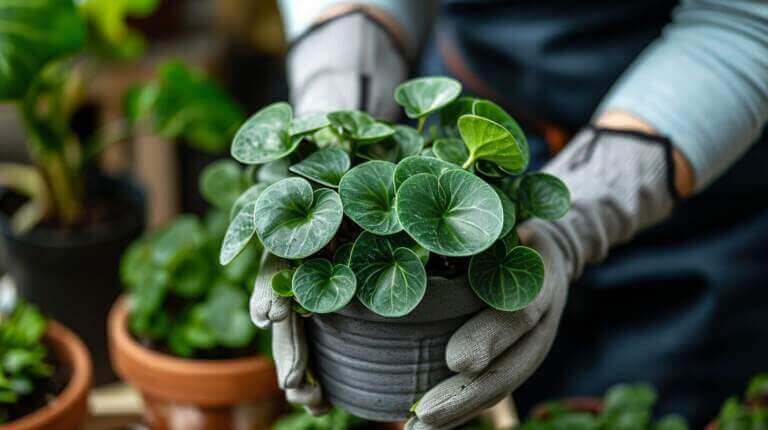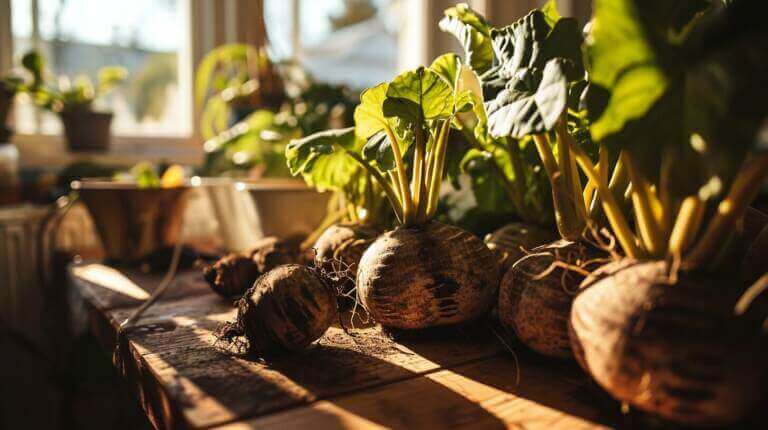Is your dracaena plant showing signs of decline, with leaves turning brown or yellow? Don’t worry, with the right techniques, you can bring your dying dracaena plant back to life.
Key Takeaways:
- Overwatering is a common problem, so let the soil dry out between waterings.
- Ensure your dracaena plant receives bright, indirect light.
- Regularly inspect for pests, such as spider mites, mealybugs, and scale insects.
- Dracaena plants prefer a warm climate, so maintain an appropriate temperature.
- Address yellowing or browning leaves, drooping or droopy leaves, scorch marks, or brown leaf tips using specific solutions.
Common Issues Affecting Dracaena Plants
Dracaena plants, including the corn plant, dracaena marginata, or dragon tree, can be susceptible to various issues that affect their health and appearance. One common problem is yellowing or browning leaves, which can be caused by overwatering or underwatering. It’s important to strike a balance and allow the soil to dry out between waterings to prevent root rot. Lack of light can also weaken the plant, so make sure it receives bright, indirect light.
Pests like spider mites, mealybugs, and scale insects can infest dracaena plants, causing damage to the leaves. Regularly inspect your plant for signs of infestation, such as webbing, distorted leaves, or sticky residue. If you notice any pests, take appropriate measures to eliminate them, such as using insecticidal soap or wiping the leaves with a damp cloth.
Pests like spider mites, mealybugs, and scale insects can infest dracaena plants, causing damage to the leaves.
Dealing with Specific Issues
If your dracaena plant’s leaves are turning brown at the tips, it may be a sign of direct sunlight or low humidity. Consider moving the plant away from a window or using a sheer curtain to filter the light. You can also increase humidity by misting the leaves or placing a tray of water near the plant.
If the stem of your dracaena is mushy or has uneven soft spots, it could be a sign of root rot. In this case, it’s important to allow the soil to drain properly and adjust your watering routine. Repotting the plant in well-draining soil may also be necessary. If the root damage is severe, you may need to cut off the affected part of the stem and propagate the plant to save it.
To prevent common issues and ensure the overall health of your dracaena plant, provide it with the ideal conditions. This includes placing it in a warm environment, maintaining the right temperature and humidity levels, using well-draining soil, and providing adequate light and water. A regular feeding schedule with a balanced fertilizer can also help promote healthy growth.
| Common Issues | Solutions |
|---|---|
| Yellowing or browning leaves | Balance watering, ensure proper drainage, provide bright but indirect light. |
| Pest infestation (spider mites, mealybugs, scale insects) | Regularly inspect for signs of infestation, use appropriate insecticides or manual removal methods. |
| Brown leaf tips | Move away from direct sunlight, increase humidity through misting or placing a tray of water nearby. |
| Root rot | Ensure proper drainage, adjust watering routine, consider repotting. |
Identifying the Causes of Plant Decline
If you notice your dracaena plant struggling, it’s important to identify the underlying causes of its decline to effectively bring it back to life. One of the key factors to consider is the amount of light the plant is receiving. Dracaena plants thrive in bright, indirect light, so if your plant is placed in a dark corner, it may be lacking the necessary light to grow and thrive. Ensure that your plant is placed in an area where it can receive adequate light throughout the day.
Another common issue that can lead to plant decline is overwatering. Dracaena plants need well-draining soil, and overwatering can lead to root rot, which can severely damage the plant. To prevent this, allow the soil to dry out between waterings and only water the plant when the top inch of soil feels dry to the touch. Remember, it is better to underwater than to overwater your dracaena plant.
Additionally, pests can also cause decline in dracaena plants. Spider mites, mealybugs, and scale insects are common pests that can infest dracaena plants and weaken their health. Regularly inspect your plant for signs of infestation, such as webs, small crawling insects, or sticky residue on the leaves. If you notice any pests, treat your plant with an appropriate insecticide or consider using natural remedies like neem oil or insecticidal soap.
Summary:
- Ensure your dracaena plant receives bright, indirect light.
- Avoid overwatering and allow the soil to dry out between waterings.
- Regularly inspect your plant for pests and treat accordingly.
| Causes of Plant Decline | Solutions |
|---|---|
| Lack of light | Place the plant in a well-lit area. |
| Overwatering | Allow the soil to dry out between waterings. |
| Pest infestation | Treat the plant with appropriate insecticides or natural remedies. |
Solutions for Reviving a Dying Dracaena Plant
To revive your dying dracaena plant, it’s crucial to follow specific techniques and solutions tailored to its needs and condition. Several factors can contribute to the decline of a dracaena plant, such as overwatering, inadequate light, pest infestation, and temperature fluctuations. By addressing these issues, you can help restore your plant’s health and vitality.
1. Watering: Overwatering is a common problem for dracaena plants, which can lead to root rot. To prevent this, allow the soil to dry out between waterings and ensure proper drainage. Additionally, if you notice signs of dehydration, give your plant a thorough soak by placing it in water for about 30 minutes.
2. Light: Dracaena plants thrive in bright, indirect light. If your plant is not receiving enough light, it may become weak and susceptible to decline. Move the plant to a brighter location or use a sheer curtain to filter the light and prevent scorch marks on the leaves.
3. Pest Management: Regularly inspect your dracaena plant for common pests like spider mites, mealybugs, and scale insects. If you notice any signs of infestation, take appropriate measures to control and eliminate the pests. This can include using organic insecticidal soap or wiping the leaves with a damp cloth.
4. Temperature and Humidity: Dracaena plants prefer a warm climate and thrive in temperatures around 60-75°F (15-24°C). Avoid exposing the plant to extreme temperature fluctuations, as it can negatively impact its health. Additionally, low humidity levels can cause brown leaf tips, so consider misting the plant or placing it near a humidifier.
| Issue | Solution |
|---|---|
| Overwatering | Allow the soil to dry out between waterings and ensure proper drainage. Water thoroughly when needed. |
| Inadequate Light | Move the plant to a brighter location or use a sheer curtain to filter the light. |
| Pest Infestation | Regularly inspect the plant for pests and take appropriate measures to control them using organic insecticidal soap or wiping the leaves with a damp cloth. |
| Temperature and Humidity | Maintain a temperature of 60-75°F (15-24°C) and consider misting the plant or placing it near a humidifier to increase humidity levels. |
Remember, each dracaena plant is unique, and understanding its specific needs is crucial to revive it successfully. By providing the right balance of water, light, and care, you can help your dying dracaena plant regain its health and thrive once again.
Summary:
To revive a dying dracaena plant, address issues such as overwatering, inadequate light, pest infestation, and temperature fluctuations. Water the plant moderately, allowing the soil to dry out between waterings. Provide bright, indirect light to support healthy growth. Regularly inspect the plant for pests and take appropriate measures to control them. Maintain a temperature of 60-75°F (15-24°C) and consider increasing humidity levels. With proper care and attention, your dracaena plant can be revitalized and thrive in its environment.
Understanding Optimal Care for Dracaena Plants
To ensure the long-term health and vitality of your dracaena plant, it’s essential to understand its specific care needs, including temperature, humidity, light, water, and fertilizer requirements.
First and foremost, dracaena plants thrive in temperatures between 60°F and 75°F (15°C to 24°C). Avoid exposing your plant to extreme temperature fluctuations, as this can cause stress and damage its delicate foliage.
Proper humidity levels are also crucial for dracaena plants, as they prefer moderate to high humidity. You can increase humidity by misting the leaves with water or placing the plant on a tray filled with pebbles and water. Just make sure the pot is not directly sitting in water to prevent root rot.
When it comes to light, dracaena plants enjoy bright, indirect light. Place your plant near a north or east-facing window, or use sheer curtains to filter direct sunlight. Avoid placing the plant in areas with low light, as this can lead to thinning and leggy growth.
Watering your dracaena plant correctly is crucial for its overall health. Allow the top inch of soil to dry out before watering, as overwatering can lead to root rot. When watering, ensure the entire root ball is thoroughly moistened, and allow any excess water to drain away. Remember, it’s better to underwater than overwater your dracaena.
Lastly, fertilize your dracaena plant to provide essential nutrients for healthy growth. Use a balanced, water-soluble fertilizer, diluted to half the recommended strength, and feed your plant every two to three months during the growing season. Avoid fertilizing during the winter months when the plant is dormant.
By understanding and meeting these care requirements, you can ensure your dracaena plant thrives, with vibrant foliage and new growth. With the right conditions and regular care, your dracaena will bring beauty and greenery to your home or office for years to come.
FAQ
How do I revive a dying dracaena plant?
To revive a dying dracaena plant, you need to address the underlying issues causing its decline. Ensure the soil dries out between waterings to avoid overwatering. Provide bright, indirect light to strengthen the plant. Regularly inspect for pests like spider mites, mealybugs, and scale insects. Maintain a warm climate for the dracaena plant.
What should I do if my dracaena plant has yellowing and drooping leaves?
Yellowing and drooping leaves may be a sign of dehydration or root rot. For dehydration, water the plant more regularly. For root rot, follow a specific guide to address the issue. If the plant is underwatered, give it a thorough soak by placing it in water for about 30 minutes.
How can I fix scorch marks on my dracaena plant’s leaves?
Scorch marks on the leaves can be remedied by moving the plant away from direct sunlight or using a sheer curtain to filter the light.
What should I do if my dracaena plant has brown leaf tips?
Brown leaf tips may indicate direct sunlight or low humidity. Adjust the lighting and consider misting the plant to increase humidity.
What should I do if the stem of my dracaena plant is soft and uneven?
A soft and uneven stem may be a sign of root rot. Allow the soil to drain and water appropriately, or consider repotting if the pot isn’t draining properly. If the root is severely damaged, you may need to cut off the rotten part of the stem and propagate the plant.
What are the ideal conditions for dracaena plants?
Dracaena plants prefer a warm climate and require bright, indirect light. They should be watered when the soil has dried out, and pests should be regularly inspected for. Understanding the temperature, humidity, soil, light, water, and fertilizer requirements will help ensure the health of your dracaena plant.







